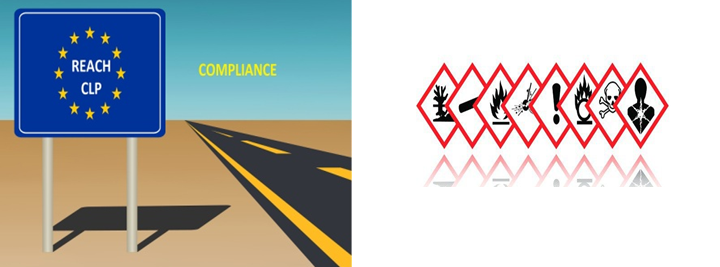WHAT ARE EDCs?
Endocrine Disrupting Chemicals (also referred to as hormone disruptors or EDCs) are synthetic chemicals that are not produced by the human body and that disrupt the normal functioning of humans and animals.
It is suspected that EDCs can cause decreased fertility, hormone-related cancers, behavioral changes, adverse effects on the immune systems, and metabolic disorders. Such adverse effects could be mediated by mimicking the body’s own hormones or interfere with hormone production, secretion, degradation or transport of hormones in the body.
EDCs are suspected of being capable of acting even at very low doses and sensitive windows of exposure appear to be during critical periods of development (for instance, fetal development and puberty).
The harmful impact that EDCs have on health and the environment has been known for more than 20 years.
On 20 September 2022 the European Commission published a Draft delegated regulation introducing new hazard classes to the system established in Regulation (EC) 1272/2008, on the classification, labelling and packaging of substances and mixtures (the CLP Regulation).
The Draft regulation would introduce the following new hazard classes and categories:
| Endocrine disruptors for human health, category 1 (known or presumed) and category 2 (suspected) |
| Endocrine disruptors for the environment, category 1 (known or presumed) and category2 (suspected) |
| Persistent, Bio-accumulative and Toxic (PBT) or very Persistent, very Bio-accumulative (vPvB) substances |
| Persistent, Mobile and Toxic (PMT) or very Persistent, very Mobile (vPvM) substances |
The regulation includes the classification criteria for substances and mixtures, as well as the relevant labelling elements, including new hazard statements. For PBT/vPvB substances, common criteria are established for persistence and bioaccumulation. However, given their difference in toxicity, they remain different categories. The same situation applies to PMT/vPvM substances.
The new classification and labelling requirements would apply to substances 18 months after the regulation’s entry into force. In the case of mixtures, the transitional period would be 36 months.
However, the draft establishes grace periods for substances and mixtures labelled before the entry into force and placed on the market before the end of the transitional period. The old classifications may continue to apply for 42 months for substances and 60 months for mixtures.
While still a draft, the introduction of new hazard classes and categories in the CLP Regulation is a key development in chemicals management worldwide. As many countries around the world seek to adopt both the GHS and REACH-like regulations, this development opens space for divergence between the global and EU frameworks. Additionally, it is related to the upcoming revision of EU Regulation 1907/2006 (the REACH Regulation), as the Chemicals Strategy for Sustainability pointed to the categorization of endocrine disruptors, PMT and vPvM substances as substances of very high concern (SVHC) under REACH.
In addition to these developments through delegated regulations, further changes to chemicals management in Europe are expected in the coming months, when the European Commission proposes amendments to the REACH and CLP Regulations themselves.
Once adopted by the Commission, delegated acts enter into force automatically unless the European Parliament or the Council of the EU explicitly oppose them. The current draft is open for public comments until October 18, 2022.
Reference:
The floating traffic jams off ports. The multiplying costs of moving freight. The resulting shortages of goods. All of this had seemed like an unpleasant memory confined to the COVID-19 pandemic. But no such luck!
An ocean container capacity crunch has hit global trade just as peak shipping season starts, with freight spot rates up some 30% over the past few weeks and heading higher.
The first joint Europe-wide assessment of the drivers and impact of chemical pollution by the European Environment Agency (EEA) and the European Chemicals Agency (ECHA) has concluded that, despite progress in some areas, “more work is still needed to reduce the impact of harmful substances on human health and the environment”. Key findings include:
The severe drought which has forced the Panama Canal, one of the world’s busiest trade passages, to limit daily crossings could impact global supply chains during a period of high demand.
In the early hours of March 26, the Singapore-flagged ship Dali, loaded with 5,000 containers, slammed into Baltimore’s Francis Scott Key Bridge, causing the 1.6-mile (2.5-kilometer) bridge to collapse in a matter of seconds. The Dali was departing for Colombo when the disaster struck. Initial fears were confirmed that half a dozen people lost their lives in the accident.
The pharmaceutical and biotechnology industries constantly seek innovative methods to enhance product stability, solubility, bioavailability and ease of use. Within this realm, CDMOs [Contract Development & Manufacturing Organizations] serve as invaluable partners in the development and production of high-quality drug products.
Chinese New Year 2024 is upon us, disrupting logistics from Asia starting Feb 10th. This event is expected to impact global shipping until Feb 21. Freight rates from Asia has skyrocketed with rates to the US surging by 3.5X and Europe by 6X.
Amid ongoing Red Sea diversions by shipping giants like Maersk, CMA, logistics managers are globally confronting a dual challenge of escalating ocean and air freight prices alongside cargo disruptions due to
Why will CM be the next generation on quality?
